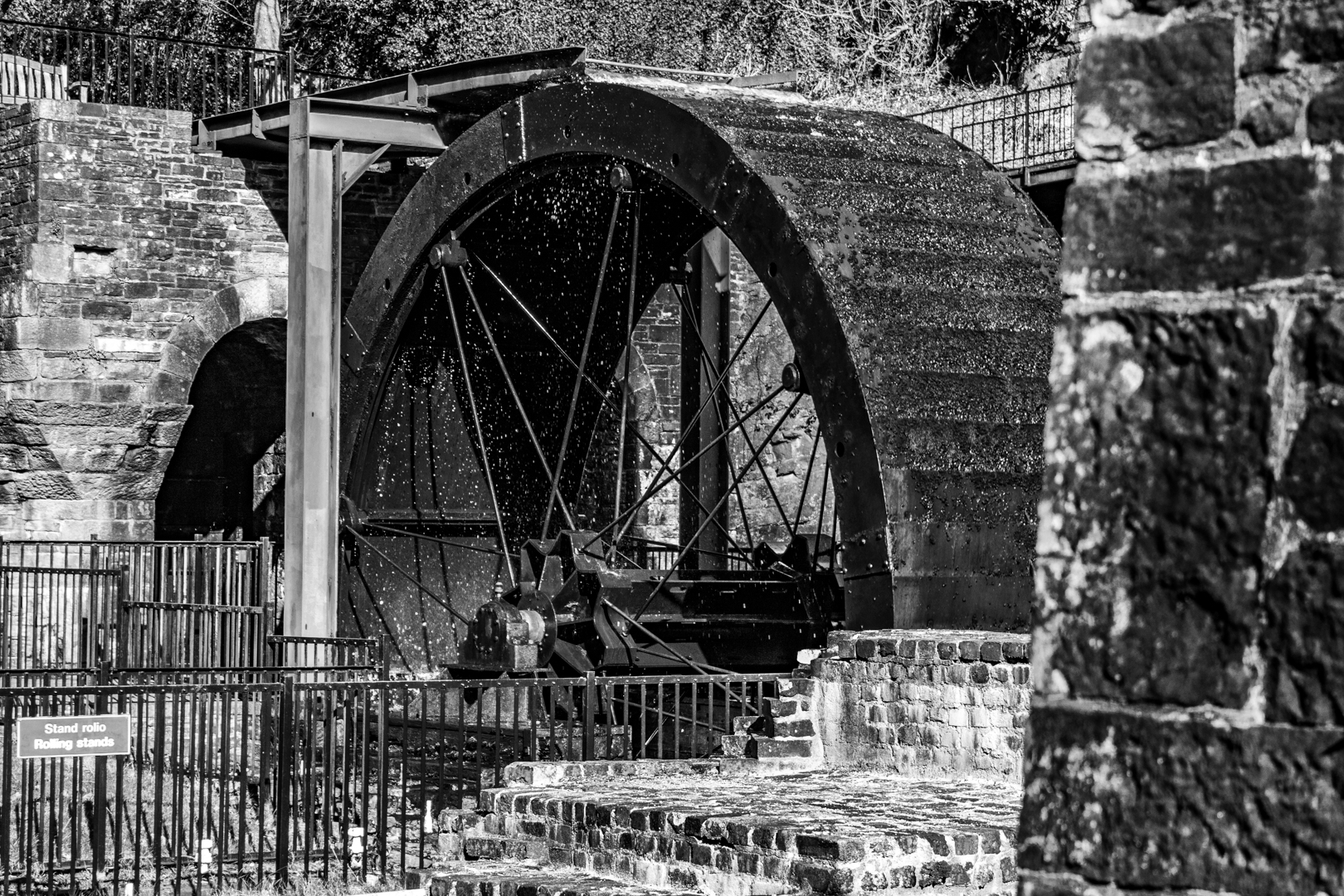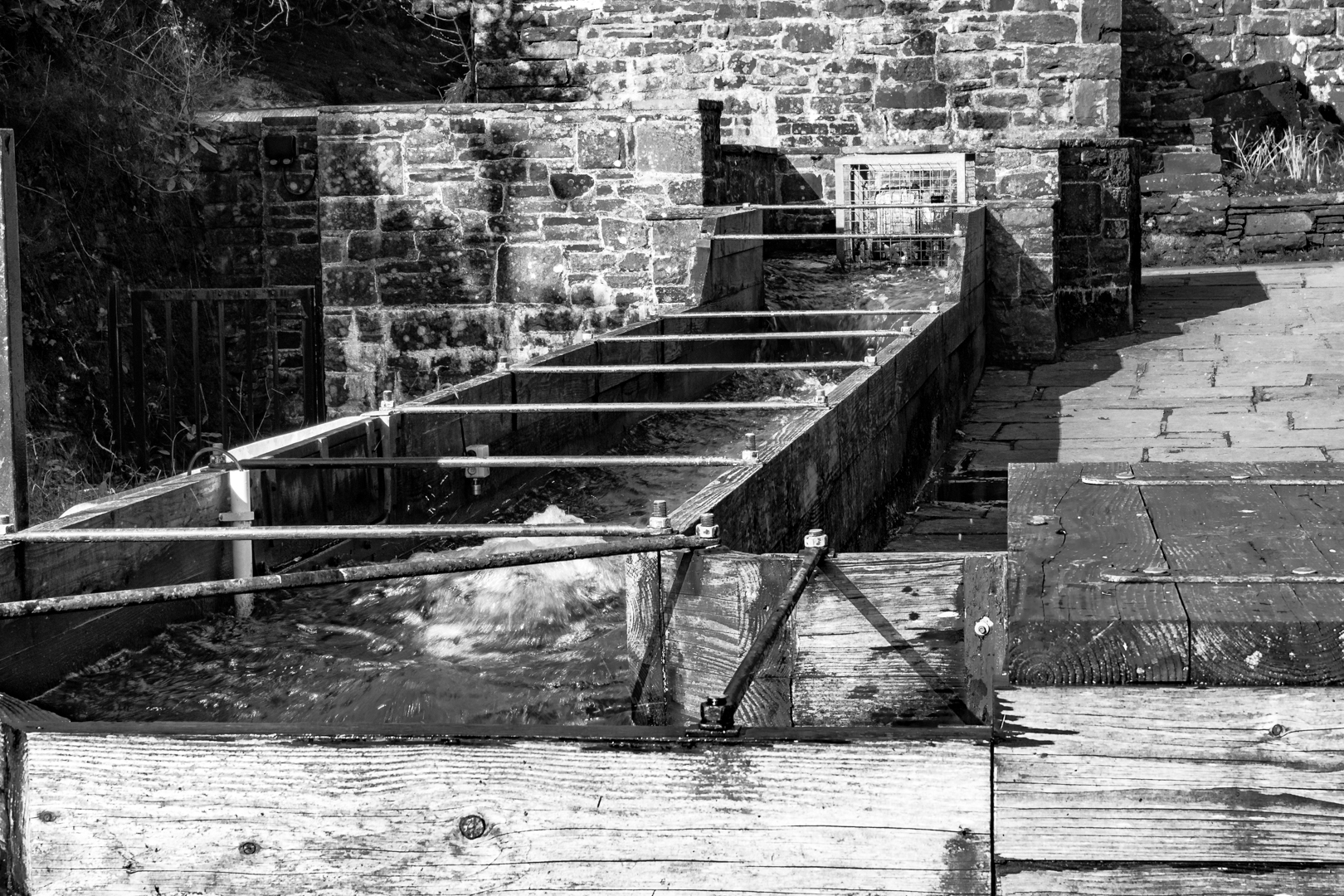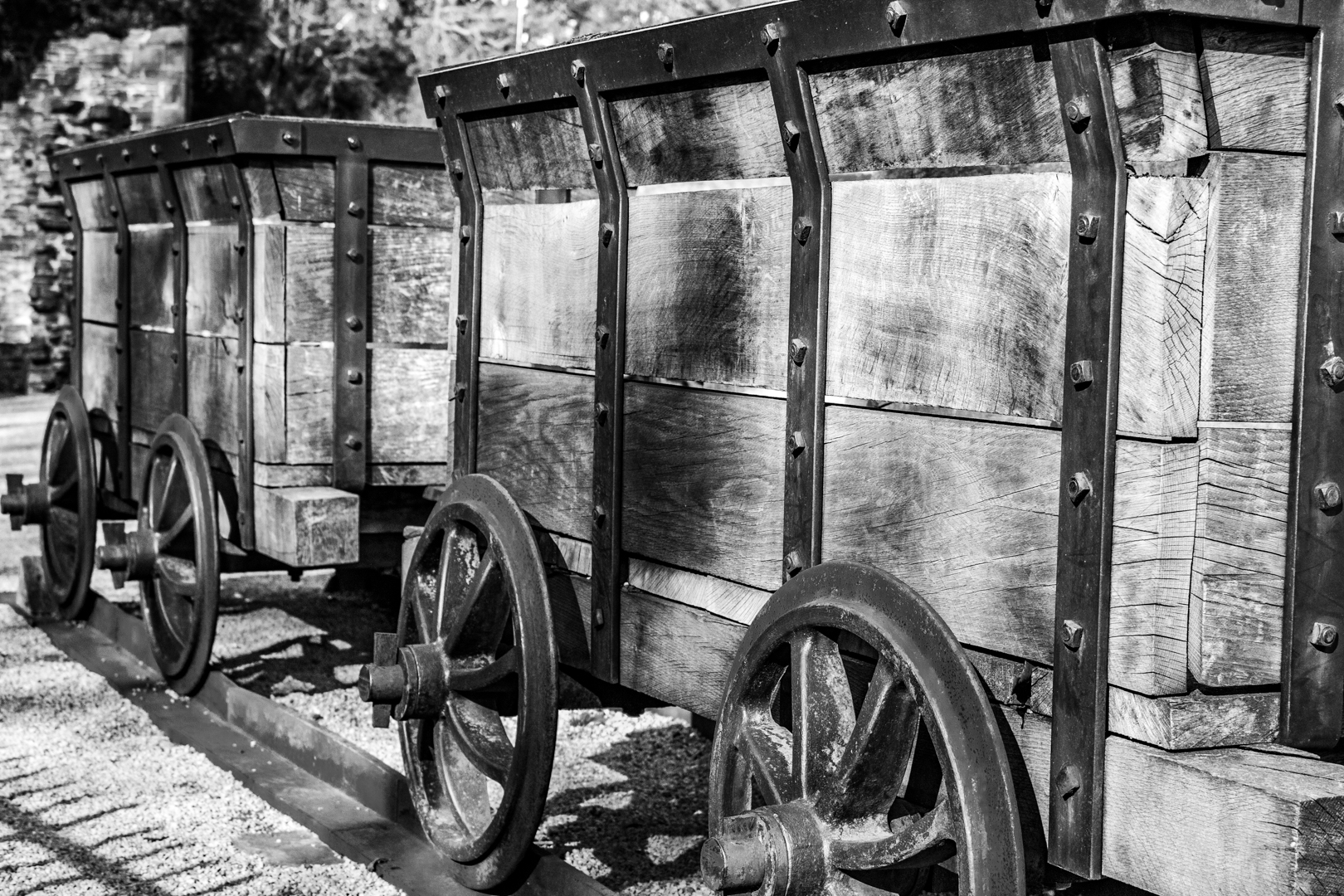Aberdulais is a small village in the Vale of Neath in South Wales.
Its history starts way back in 1584, when a German engineer Ulrich Frosse, perfects a new method of smelting copper to make coins. His need was to ply his trade far from his competitors and he chose the small Welsh town of Aberdulais.
However, the story of Aberdulais really starts over 200 years later when in 1831 local businessman William Llewellyn established the Aberdulais Tinplate Company.
This works was one of the first to roll iron ingots into flat plates and the hammers and rollers were powered by a huge water wheel which took its momentum from the river Dulais.
Within a short space of time the Aberdulais Tinplate Company had expanded with the construction of the Lower Works, some 400 yards to the south, and the original site known as the Upper Works. The two sites were connected by a tramway. Horse-drawn drams ferried materials between them.
A further tramway was built to the wharf on the canal and then on to Swansea Docks where the tinplate was exported all over the world
A Commission report in 1842 tells us that there were 138 people working at the two sites, of whom 34 were children aged between 8 and 13.
Tinplate was so popular it was the equivalent of modern-day plastic and was used extensively as packaging for food.
However, it’s success perhaps lead eventually to the downfall of this tin works as the Americans moved to protect their own infant industry and slapped huge tariffs on tinplate imports. Aberdulais’ days were numbered.
Part of the title of this post describes the falls here are there are waterfalls that run alongside the tin works and were also used to drive the machinery.
The falls and associated industrial infrastructure are in the care of the National Trust in recognition of the site's value as a key part of the region's industrial heritage.
With so much of our history being destroyed in the past as worthless it is great to see that some of the relics of this time have survived and the visitor centre at the falls attempts to keep this history alive and thankfully has preserved the great wheel which still turns “at leisure” today.
The “falls” were unspectacular at the time I visited but one could not fail to be impressed but the reconstructed water wheel. I may revisit this after some rains to see the falls in all their glory.
Footer:
Visit Information:-
Google Reference
51.68011460292001, -3.7774655351943447
Google Search reference: Aberdulais Falls
What Three Words reference : ///descended.buns.first
Additional information
Visiting this site is easy with car parking just across the road from the main entrance.
Google Reference
51.68011460292001, -3.7774655351943447
Google Search reference: Aberdulais Falls
What Three Words reference : ///descended.buns.first
Additional information
Visiting this site is easy with car parking just across the road from the main entrance.
The site is maintained by the National Trust and there is a small entrance fee. Toilets, café and gift shop are also on the site.





Another interesting place I've never heard of despite growing up not that far away.
ReplyDelete